The subtleties of choosing a plaster mixture
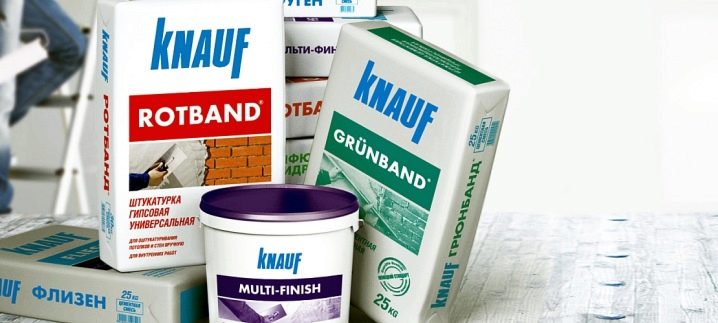
Anyone who is directly or indirectly faced with a repair knows perfectly well what a plaster mixture is and what it is used for. Indeed, the quality of construction work, as well as further arrangement in general, depends on the correct choice of this material, since plaster is the basis for the implementation of ideas regarding the interior of the room.
Peculiarities
The composition that levels the walls, both inside and outside the house, is called a plaster mixture. It prevents the formation of defects and cracks on the surface, favorably affects the microclimate, and is also the basis for finishing facades and carrying out interior work. The products are used for sound insulation and thermal protection. Given the purpose for which the plaster will be used, experts give preference to one or another type of material.
There are many types of mixtures on the market now, each of which has its own characteristics. Unfortunately, many people confuse dry mortar and dry plaster. The mixture, before starting work, is diluted with water, and dry plaster is made up of sheets of drywall.
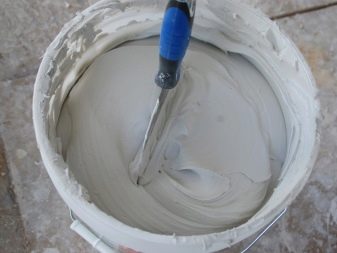
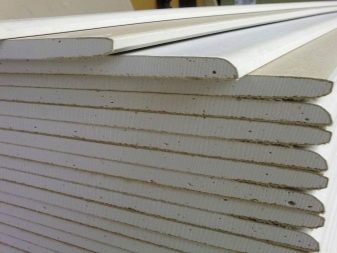
You can make plaster yourself, but the quality of such a solution will be very doubtful. Therefore, in order to avoid mistakes and additional financial costs, it would be more correct to use a ready-made composition from trusted manufacturers of building materials. Dry building plaster mixes must meet certain GOSTs.
In order not to be mistaken with the choice, you need to have an idea of what products are used for what, and what characteristics they should have.
The density indicator of the plaster mixture is of great importance. The density of the dry composition depends on how much air will be entrained in the solution. This characteristic is of great importance for the correct application of the solution in working with various types of surfaces. As a rule, this value is indicated on the packaging of the mixture.
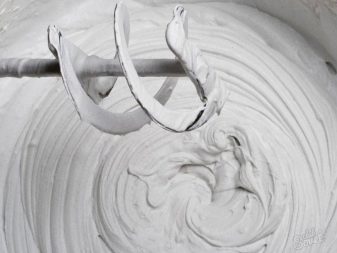
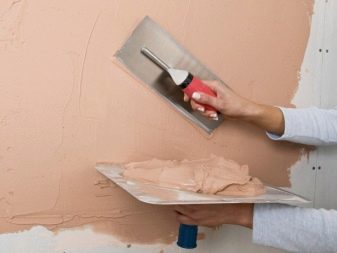
Mixtures are divided into several types depending on the binder component that is part of the product.
Views
The development of modern technologies has allowed manufacturers of building materials to produce a wide range of ready-made compositions for plaster and dry mixes. Loose mortars for plastering work are divided into several types, depending on the filler.
Several varieties can be distinguished among them:
- Gypsum plaster - which contains gypsum and mineral additives. It is used for interior work, is easy to apply, dries quickly and has a white color. It is sold ready-made, after diluting the composition with water, you can start surface treatment. Some specialists, when rubbing the plastered surface with a polyurethane float, make it perfectly smooth and glossy.
There is no need to additionally process such a wall with putty, you can immediately start gluing wallpaper sheets on it.

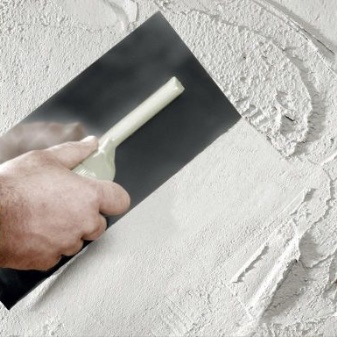
- Cement-sand mixture, among the advantages of which are durability, strength, as well as low cost. The solution for performing work is obtained by mixing the composition with water in the proportion indicated on the package. The mixture is widely used in the construction and renovation process, therefore it is considered a versatile product. However, it cannot be used for residential premises.

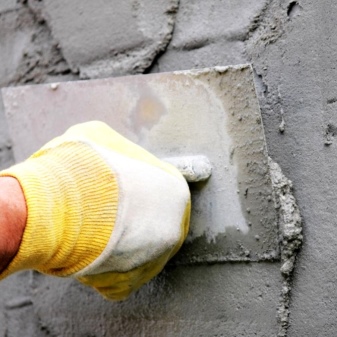
- Lime plaster contains slaked lime as the main component. This component is known for its antibacterial properties and good plasticity. This additive allows the mortar to do an excellent job of leveling damp walls in rooms. Among the advantages of this plaster, adhesion to almost all surfaces can also be distinguished.
The lime-carbonate mixture is affordable and is ideal for interior decoration.

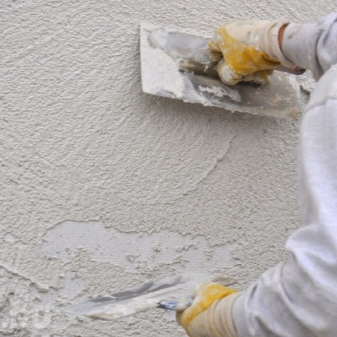
- Adhesive mixture, which includes sand and cement, as well as a number of polymer additives and special fibers. With such products, work is performed on the installation of insulation. Due to its high cost, this plaster is not used for leveling walls in rooms.
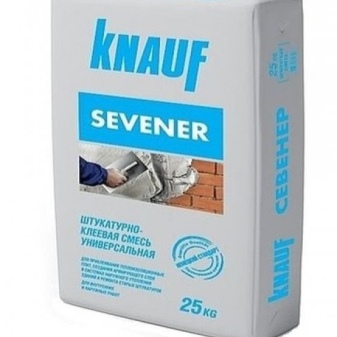
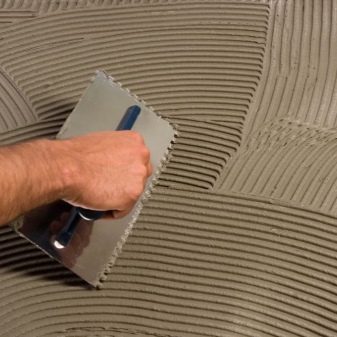
- Clay plaster can be used for partial decoration of some elements, for example, fireplaces or chimneys, and for complete wall decoration. It is the most environmentally friendly material for plastering surfaces.
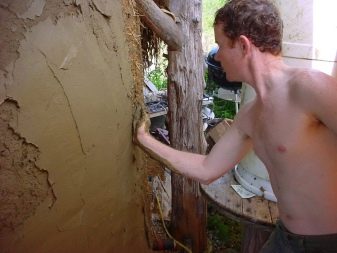
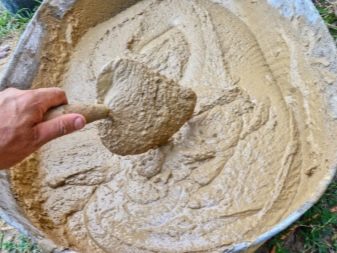
The dry mix is sold in paper bags of 20-25 kilograms. For decorative work, ready-made mixtures are used, which are a homogeneous mortar for plastering walls. Manufacturers produce such products in buckets or large cans. The solution does not require preliminary dilution with water: in order to start working with it, it is enough to open the container and move the composition using a construction mixer.
Manufacturers of some brands of ready-made mixtures advise treating the walls with a primer before applying the plaster. The cost of the finished mixture is several times higher than the dry composition.

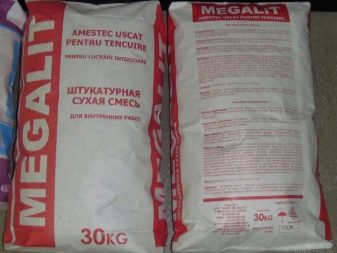
Ready-made mixtures can be classified by their composition, as well as by the surface texture that will result from the work:
- Textured plaster - contains, among other components, natural ingredients such as wood fragments, flax fibers or natural stone chips. This composition of the mixture, after applying it to the wall, sets a pronounced relief. Among the popular representatives of this composition, as an example, one can single out the decorative coating "Bark beetle", which repeats the texture of the bark of a tree.
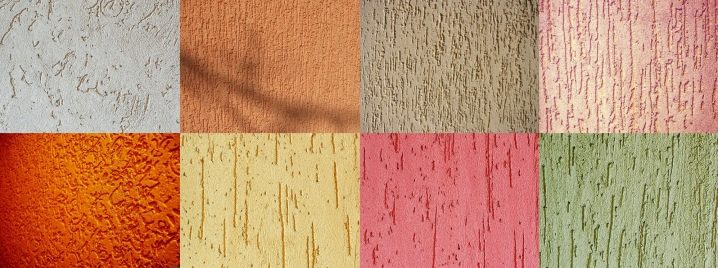
- Venetian mix - the most expensive material among ready mixes for plaster. The base for this mortar is marble. Thanks to him, the surface, after applying the composition, visually resembles this natural stone.
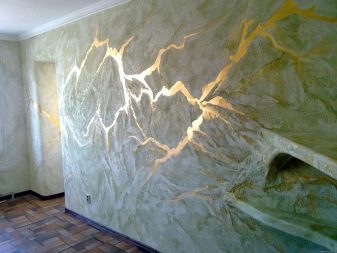

- Structural plaster based on quartz sand. The wall, after applying this composition, can be smooth or embossed. It includes plaster "under a fur coat", which is very common for decoration of private houses.
The mixture has good moisture resistance, due to which it is acquired for work in rooms with high air humidity.

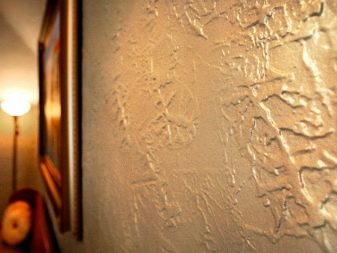
- Polymer productsconsisting of latex and acrylic components. Due to their presence, the plaster acquires higher levels of sound insulation and fire resistance of the walls.
All of the above types of ready-made mixtures are applied using a metal spatula, a comb and bristle brushes. Each type of plaster mixture has its own disadvantages and advantages, however, the use of material designed for specific types of work - internal or external, taking into account the type of work surface and the characteristics of the room, will help to achieve the desired result and avoid mistakes.
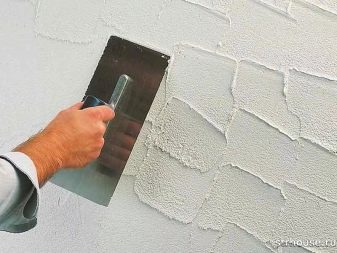
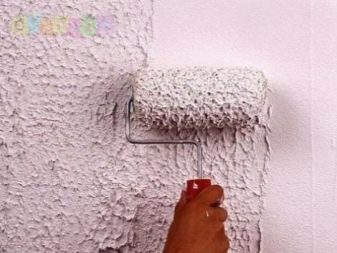
Application area
For external and internal work, completely different compositions are required.
Most manufacturers place information on the scope of their products on the packaging:
- Plaster for the treatment of building facades must be durable and have a long service life, be resistant to external factors, such as temperature drops, precipitation, ultraviolet radiation, humidity, and various types of mechanical damage.
- For buildings in which the facade is insulated with expanded polystyrene, the usual plaster mixture will be unsuitable.A special composition is produced for this material, which will provide waterproofing protection, protection from sunlight and temperature fluctuations. You cannot do without the use of a reinforcing mesh in the work.
The use of mineral wool slabs in construction is a good option for insulating the walls of houses from the outside, they are several times heavier than expanded polystyrene, but they also require plastering with special vapor-permeable compounds.
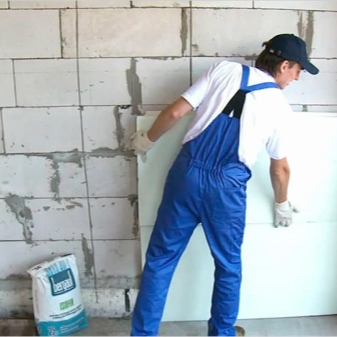
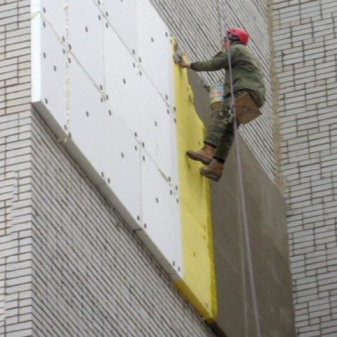
- A house made of aerated concrete blocks, due to the hygroscopicity of the material, requires special protection. Facade plaster mix for aerated concrete is an ideal material for such a finish. It can be used to plaster blocks inside and outside the house. Plus, the plaster has an attractive appearance, for example, if you purchase a specialized textured composition.
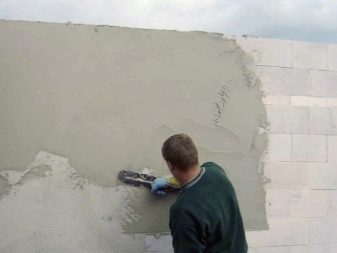
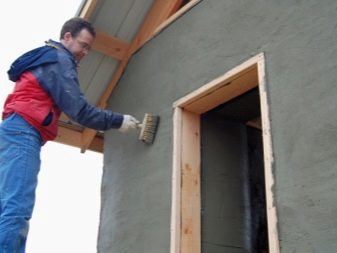
Interior work requires the use of decorative materials that are environmentally friendly in their components. Premises with a high level of humidity also require plastering work.
For bathrooms in an apartment, the use of plaster will solve two problems: to prepare the surface for finishing work, or to decorate the surfaces for the final stage of the repair. In damp rooms, they most often prefer to work with ready-made dry mixes based on gypsum or cement.
In both cases, the type of surface plays an important role.on which the plaster mixture will be applied. However, most of the manufactured products are allowed to be used for both interior and exterior decoration. Dry plaster mix is suitable for leveling surfaces, preparatory work on walls and ceilings. For final work, it is still better to give preference to decorative plaster in the form of a ready-made solution.
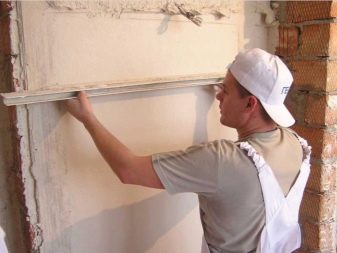
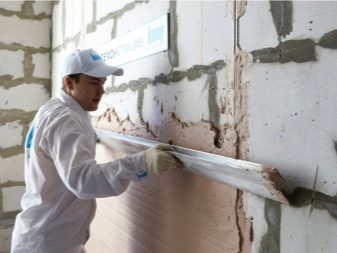
Manufacturers
A huge range of plaster mixes from various manufacturers is presented on the modern construction market. Thanks to this, you can solve most of the complex problems associated with the repair and interior design.
- Among the leaders that have proven themselves well in the market, one can note the international group of companies Knauf and Kreisel... The products of these German manufacturers have been popular for more than one year, thanks to the high quality standards that are strictly observed in the production of building materials. The assortment of the Knauf company includes gypsum plasters for interior finishing works, as well as cement mixtures used for finishing inside buildings. Kreisel offers professional plastering solutions for both manual and machine application. German products are also presented on the domestic market.
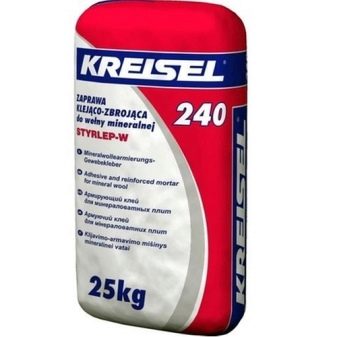
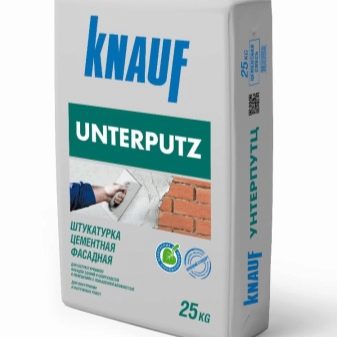
- High quality plaster made in Russia "Prospectors" used for the repair of any objects on a par with foreign manufacturers. The company offers a whole series of plaster mixes for various purposes, including the decorative composition "Bark beetle", as well as gypsum and cement mortars.
- The line of plaster mixes from many manufacturers includes decorative plaster "Wave", forming a moisture resistant coating that resembles light ripples on water. This textured blend is ideal for rooms with high levels of humidity, such as kitchens or bathrooms.
- Optimist-Elite company produces such a finishing coating that allows you to shape a texture for every taste, from imitation of a light breeze blowing on the sea surface, to a raging stormy sea.


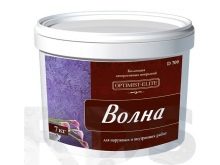
- Henkel Bautechnik is engaged in the production of Ceresit building materials, which are the undisputed leaders in the segment of products for renovation work. Renovation and decoration of premises is a priority direction for the company. That is why Ceresit plaster mixes are distinguished by excellent quality and a wide variety of types.Ceresit CT 35 plaster is used for facades and interior works.
The coating made with this composition is distinguished by texture and attractiveness, Ceresit CT 137 decorates the surface of the walls, setting the texture resembling small pebbles.
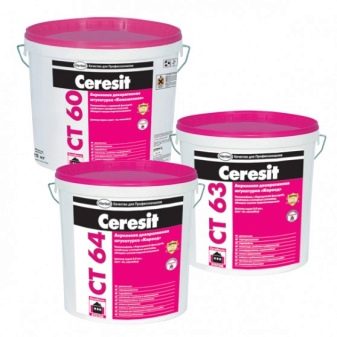
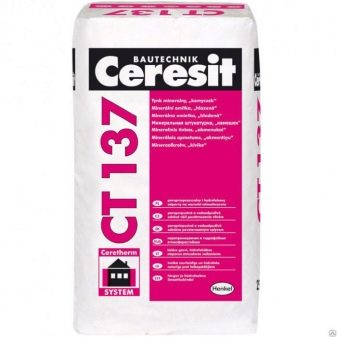
Reviews
Among modern gypsum plaster mixes for working with surfaces made of concrete, brick and plaster, Knauf Rotband composition is distinguished. Product reviews emphasize its main advantages - plasticity, excellent adhesion and environmental friendliness.
For interior finishing of surfaces for further tiling or wallpapering, Volma-Layer plaster has proven itself quite well. Its disadvantages include fast solidification, so you need to dilute the mixture in small quantities.
In the rating of firms that produce quality products for plastering work, Knauf occupies a leading place. Popular Russian manufacturers are Yunis, Osnovit and Volma.
Based on the ratio of cost and quality, according to most buyers, the Prospector's gypsum mixture is one of the best materials for plastering surfaces. It is important that it has a small consumption per m2, and after the solution has solidified, it does not sit down and remains flat.
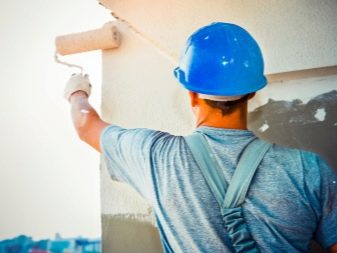
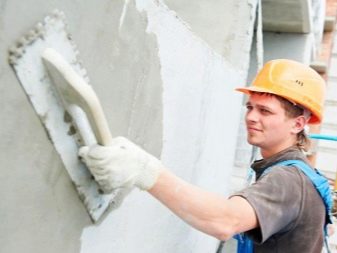
Tips & Tricks
The undoubted advantage of ready-made building mixtures is their quality and a competent combination of all components. However, preference should be given to products manufactured by trusted manufacturers. New materials need to be treated with caution. As a rule, the high cost of such a mixture will be justified by the ease of use of the composition, as well as economical consumption. It is very important to make large purchases of building materials only from reliable suppliers. This will help avoid the acquisition of fakes under well-known brands.
Do not forget about additional materials: in some cases, to increase the strength of the applied plaster layer, a masonry mesh may be needed.

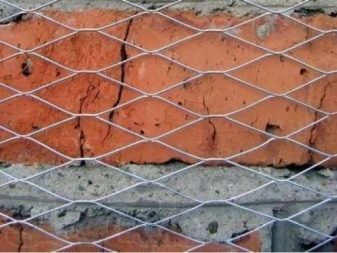
Regarding the application on different surfaces, experts recommend the following:
- wooden walls are plastered with a cement-lime composition using a crate;
- for foam concrete, it will be preferable to purchase a gypsum mixture;
- brick walls do not require the application of a special compound.
To make sure that the purchased products are of really high quality, you can check their packaging. The dry plaster mixture in the bag will have a film between the outer and inner layers of the package. The release time of the composition, printed on the bag, should not be the same. To increase the plasticity of the plaster mixture, it is recommended to add a little detergent to the water. For work on surfaces that have significant curvature, it is best to use plaster beacons.
Having carefully studied the characteristics of each type of plaster mix, you can easily make the right choice.
See below for a comparison of plaster from different manufacturers.













The comment was sent successfully.